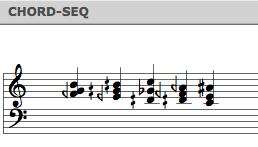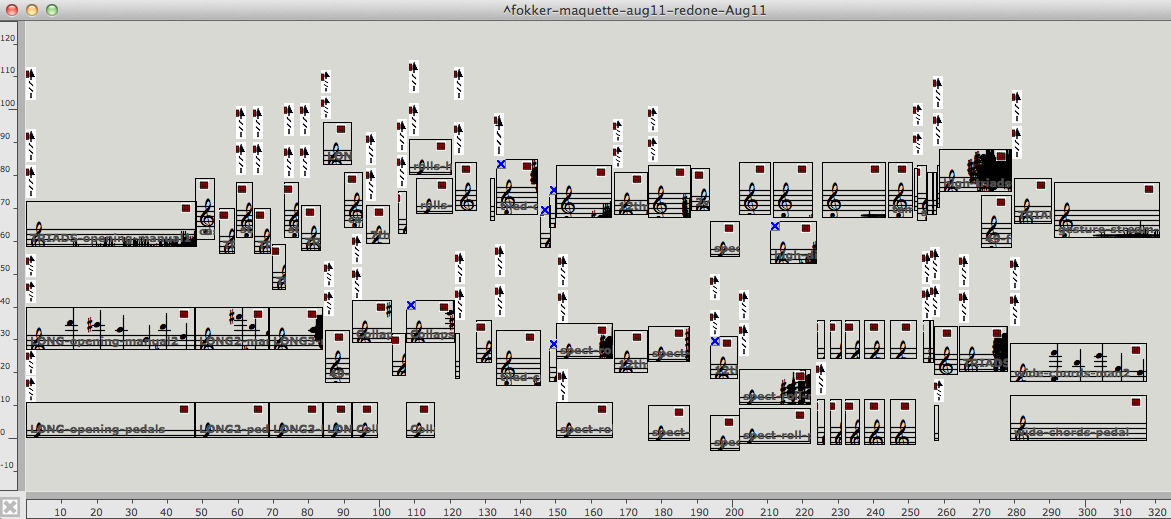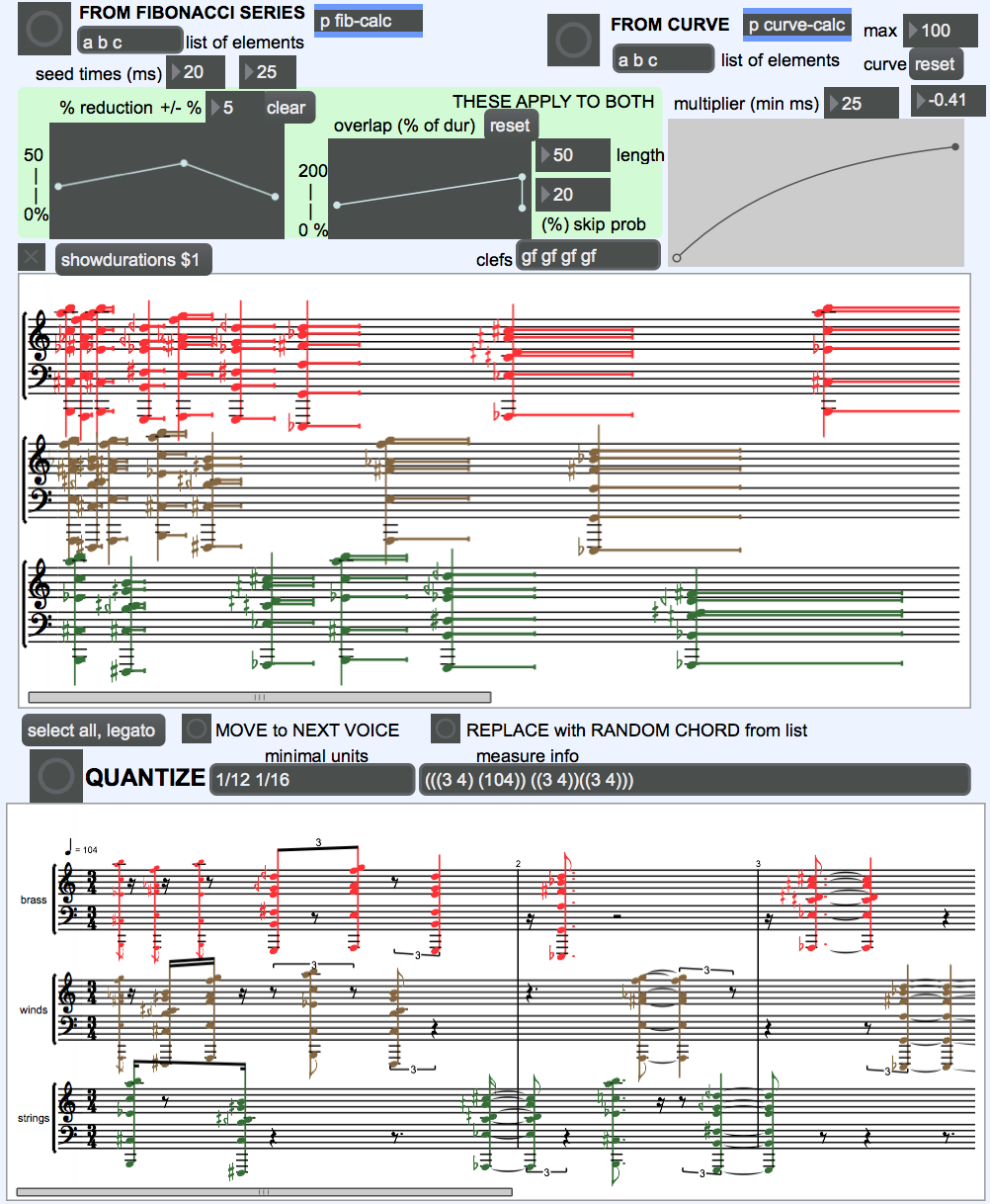COMPUTER-ASSISTED COMPOSITION
with OpenMusic and bach
From my first encounters with computer music, I’ve been drawn to the possibilities of computer-assisted composition, the field where musical notation collides with the processing and organizational power of computers. Far from becoming a slave to the machine’s suggestions, I’ve found OpenMusic has enriched my practice, allowing me to generate, experiment with, and refine material in a variety of ways.
I started out using OpenMusic’s LISP-based notation interface to manipulate and visualize microtones—a basic function, but a valuable one that is not widely available elsewhere. While studying on the cursus, I delved into OpenMusic’s more advanced capabilities, making use of its ability to act as a pitch and onset interface for external software via its libraries. Significant for me among these were the OMSuperVP library for sound editing (time-stretch, transposition), the Modalys library for piloting physical-modeling synthesis, and the OMPrisma library for spatialization. An algorithmically composed passage from my cursus piece Cognitive Consonance is shown in the patch below, with synthesis and spatialization subpatches that are used to transform the short notated passage into an eight-channel sound file. I detailed this and other compositional and technical processes behind the composition of Cognitive Consonance, in a recent article for the OM Composer’s Book, Volume 3, published by IRCAM.

Other projects rely even more heavily on CAC. In an online article for IRCAM’s Forumnet, I describe the process of composing Forty-Nine, Forty-Nine for the MIDI-controlled Fokker Organ in Amsterdam. The piece was entirely  composed in OpenMusic, and makes use of a specially-adapted interface, thanks to Jean Bresson, for the organ’s 31-note-to-the-octave microtonal tuning, Many small components of the work were created using algorithmic processes, and these were assembled using the maquette environment. Passages could thus be manipulated in a two-dimensional space, and the MIDI-out capability of the maquette allowed it to play the organ directly—a sort of intercative digital piano roll that served as the only score to the piece…
composed in OpenMusic, and makes use of a specially-adapted interface, thanks to Jean Bresson, for the organ’s 31-note-to-the-octave microtonal tuning, Many small components of the work were created using algorithmic processes, and these were assembled using the maquette environment. Passages could thus be manipulated in a two-dimensional space, and the MIDI-out capability of the maquette allowed it to play the organ directly—a sort of intercative digital piano roll that served as the only score to the piece…

CAC has also served as a useful planning tool for purely acoustic compositions. In Passing Through, Staying Put and Past All Deceiving: Cavafy Songs, I used OpenMusic to generate progressions of chords according to constraints: specifically, a set of voice-leading rules and a palette of predetermined possible consonant intervals.
For more recent pieces I’ve shifted from OpenMusic to bach, a Max-based library whose interoperability with the CataRT tools I often use is a significant advantage. I store, cut, and paste material, referring back to a sketchpad of the compositional process. In Spinning in Infinity, bach was used to create the sensation of patterns that spiral out from a dense center, by translating curves and chiseled fibonacci series into chord progressions (again derived from a list of permitted intervals) that start with a tense flurry of notes with increasingly more space interpolated between attacks. These gestures were then quantified and the result orchestrated, split between the electronics and the live orchestra.

In a final example—another logistical application of CAC for an acoustic piece—I built the guitar machine below to keep track of microtonal retunings while composing Alcohol and Algebra, to visualize the placement of the hand on the neck and the resultant pitch content. After setting the base tuning and positioning the colored sliders on the fretboard, the fingered pitches can be seen in a bach.roll object, and can also be heard by triggering a set of steel-stringed guitar samples (courtesy of Taylor Brook). A preset object makes it possible to store and recall the fingerings and underlying tunings, and a subpatch displays of all the available harmonics in a bach.roll, with partial numbers in red and color-coded by string.
